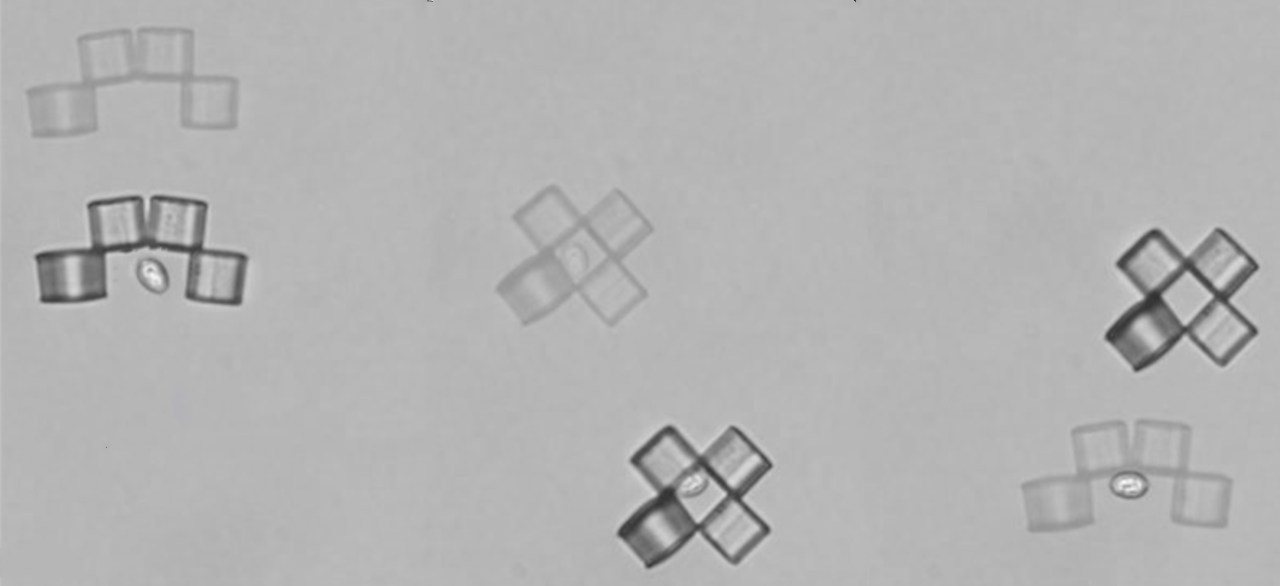In a captivating advancement from the realms of North Carolina State University and Duke, a new breed of microbots is emerging that promises to revolutionize how we interact with biological cells at an unprecedented scale. These innovative ‘microbot origami’ cubes, with their ability to morph and combine into various shapes, showcase the future of micro-manipulation with both research and medical implications. Let’s delve into the fascinating world of these tiny modular robots and explore their significance in scientific exploration.
The Microbot With a Twist: Structure and Function
The design of these microbots is as ingenious as it is practical. Comprised of small polymer cubes, each outfitted with a metallic coating on one side, the microbots can be manipulated by electromagnetic fields. This allows the cubes to orient, snap together, and create engaging structures that can entrain and capture cells—consider them tiny, dynamic Pac-Mans of the microscopic world.
- Modular Design: The ability to reconfigure into countless shapes offers exceptional versatility in applications.
- Electromagnetic Manipulation: Surrounding electromagnets allow researchers to control movement and transformation in real-time.
- Nature’s Inspiration: The design mirrors the folding mechanisms of protein strands, hinting at a biomimetic future in robotics.
Applications in Research: Beyond Observation
One of the most compelling aspects of these microbots is their potential as investigative tools at the micro-level. While macro-scale materials can be easily tested, probing individual vesicles or cellular entities poses a significant challenge. As co-author Orlin Velev succinctly puts it, “It’s much more difficult to pinch one single vesicle at a time.” These microbots offer a practical solution.
By enabling researchers to interact with single cells effectively, they provide insights into unfamiliar materials and processes that were previously unattainable with conventional methods. The implications for materials science are staggering, as understanding micro-structures can lead to breakthroughs in various fields.
Medical Marvels: Potential Clinical Applications
The horizon shines even brighter with potential medical applications. As these microbots evolve from mere research tools, they could play a central role in surgeries and diagnostics. Their capabilities might allow for:
- Targeted Cell Manipulation: Doctors could target and isolate specific cells for analysis or treatment.
- Biomedical Devices: The microbots could lead to the development of artificial muscles that function at the cellular level, enabling new treatment modalities.
- Micro-surgery: The precise control afforded by these microbots could revolutionize surgical techniques, allowing for less invasive procedures.
Innovative Collaborations: The Path Forward
The ongoing exploration in microbot technology shares similarities with other projects from institutions like MIT, which focus on tiny origami robots. However, the novel electromagnetic manipulation featured in these microbots sets them apart. As researchers continue to refine their designs, the potential applications seem limitless and ripe for collaboration across fields.
Conclusion: A New Era of Micro-Manipulation
The emergence of such versatile microbots symbolizes a pivotal moment in both research and medical fields. With their ability to capture and analyze single cells, they stand to bridge the gap between centralized methodologies and precise, micro-level operations. As we keep our eyes on the horizon, it’s clear that such innovations are laying the ground for groundbreaking advancements in technology.
At **[fxis.ai](https://fxis.ai)**, we believe that such advancements are crucial for the future of AI, as they enable more comprehensive and effective solutions. Our team is continually exploring new methodologies to push the envelope in artificial intelligence, ensuring that our clients benefit from the latest technological innovations.
In summary, as the world of biomedical technologies continues to expand, keeping pace with innovations like these microbots is vital. For more insights, updates, or to collaborate on AI development projects, stay connected with **[fxis.ai](https://fxis.ai)**.

